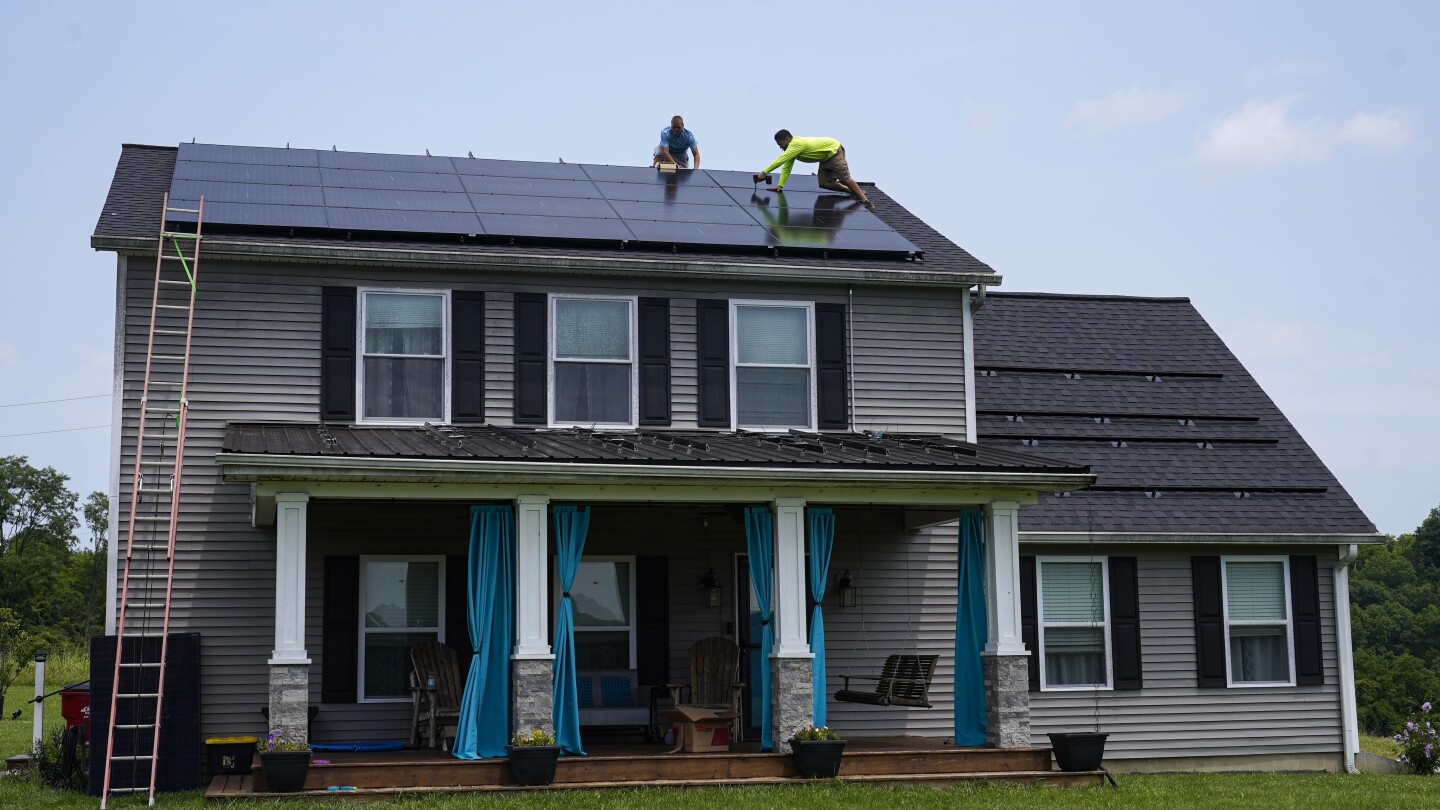When Jim Selgo moved to his home in Goodyear, Arizona in 2019, he quickly had rooftop solar installed, having had a positive experience with solar at his previous home.
Less than a year later, motivated to take more action to address climate change, he said, Selgo bought his first electric vehicle, a Nissan Leaf. He hasn’t paid for electricity or gasoline since.
With solar, “You take advantage of what you’re producing at your own house,” he said. “Adding an EV just increases your savings and adds to the value of the whole project.”
Selgo, a retired public school principal who now drives an electric Volkswagen ID.4 SUV, is just one of many people using solar energy to power their EVs on clean electricity, effectively, on sunshine. And it also goes the other way.
“It’s probably more common today that you have someone who has a solar energy system who is looking at an EV, just because solar has been around longer,” said Becca Jones-Albertus, acting deputy assistant secretary for renewable energy at the U.S. Energy Department. “But we know that many EV owners are looking to install solar so that it helps with their increased electricity use and can support more economical charging at home.”
Of 131 million U.S. households, about 4.5 million have added rooftop solar, as its benefits become more known, according to the DOE’s Solar Energy Technologies Office. And 2023 set a record with more than 1 million EVs sold in the U.S.
EVs have to plug in to charge up and run, but electricity from the grid often still comes from burning fossil fuels, negating some of the environmental benefit of going electric. Solar can fix that. It’s an important point because electricity production and transportation are the largest two sources of greenhouse gas emissions, and therefore climate change, in the U.S., according to the Environmental Protection Agency.
Residential solar electric, or photovoltaic systems, convert the sun’s rays into electricity when they hit a solar panel. If an owner chooses to buy a set of batteries to pair with the panels, they can have an ongoing “bank” of energy to pull from. Nearly a fifth of new household solar systems in California, which dominates the rooftop solar market in the U.S., were installed with batteries in 2022.
Automakers are seeing this crossover interest and getting into the business several years after Tesla bought solar company SolarCity in 2016 and launched a solar roof division.
Several legacy car companies are launching efforts to connect customers with energy services, including solar installation contractors. General Motors’ energy unit, GM Energy, is one example. The automaker wants to offer a one-stop-shop for customers looking for at-home charging, solar, and other energy management tech.
“That’s where we see everything working together,” said Derek Sequeira, GM Energy’s director of EV ecosystem.
Hyundai Home helps the company’s EV customers select home charging and solar solutions. Ford, too, is dabbling in this business.
But access to rooftop solar is not equal, so the combination is not an option for all EV owners. About half of households in the U.S. either don’t have control over their roof, or find that it’s not adequate because of location, space or orientation, according to the DOE solar office.
There is a push to address that. Community solar projects allow renters or condo owners or other communities to have a share in a small solar array. This form of solar is growing and has contributed to the overall record growth in U.S. solar capacity this year, according to the Solar Energy Industries Association.
Some utilities may also not want customers to produce more solar electricity than they need, because it would mean they have to pay them back for the surplus in the form of credits.
Installation costs can also be prohibitive. A standard system could run a consumer $10,000 to $15,000 or more, according to the Center for Sustainable Energy, a nonprofit in San Diego, California.
But the cost has been coming down. In 2010, a residential rooftop installation could cost $8.70 per watt. That fell to $3.16 per watt by 2022, according to the National Renewable Energy Laboratory.
Federal incentives are making residential solar systems more affordable — at the same time incentives are also aiding EV affordability. The Inflation Reduction Act, which President Joe Biden signed into law in August 2022, allows consumers to claim 30% of what they put into their system as a credit on their next federal tax bill.
Different states also offer varying rebates and incentives. Selgo said his system cost $19,500, but after receiving the 30% federal tax rebate and $1,000 from the state of Arizona at the time, he ultimately paid out around $12,500.
Jerry Schotz bought two EVs in 2021. He was interested in renewable energy and wanted to go electric for all of his household needs — including an electric lawnmower — he said, so “Solar just makes sense.” He had it installed at his home in Champaign, Illinois, last year.
“A lot of folks use solar just to power their home, but we’re powering our home and our cars with the same solar systems,” Schotz said. “When you think about the climate, we’re no longer using fossil fuels to drive on the road.”
__
Alexa St. John is an Associated Press climate solutions reporter. Follow her on X, formerly Twitter, @alexa_stjohn. Reach her at ast.john@ap.org.
__
Associated Press climate and environmental coverage receives support from several private foundations. See more about AP’s climate initiative here. The AP is solely responsible for all content.

